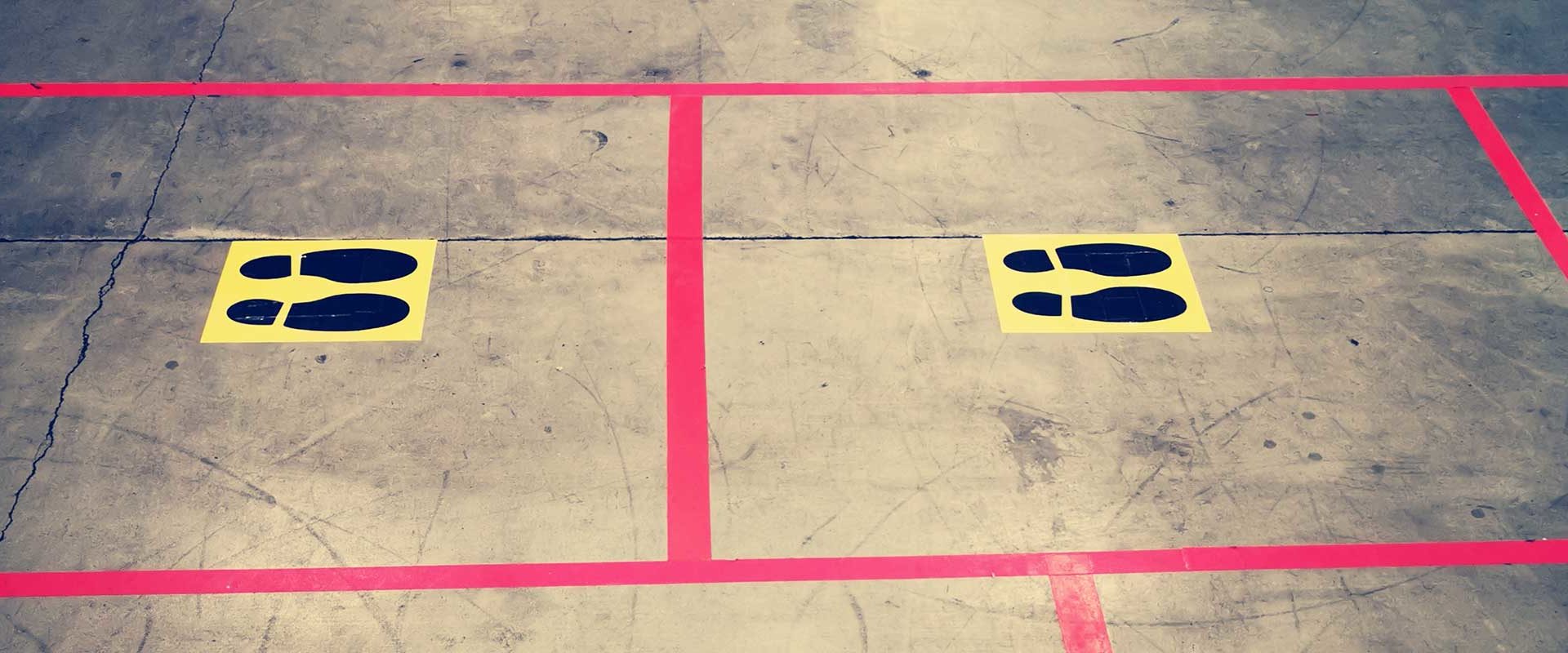Floor markings and tape can be used to improve safety in the workplace and to increase efficiency and compliance. By using tape, areas within a factory or warehouse can be separated into lanes for pedestrian and vehicle use to reduce the number of accidents on site. RND offer an extensive range of tapes and signs to promote best practice and to ensure that health and safety regulations are adhered to.
The benefits of floor markings

Use consistent, colour-coded floor markings in your workplace to mark out lanes and designated areas for materials, pallets and working. This will increase safety and efficiency.

With a clear colour-coded system, you can associate certain colours with certain tasks or areas. Colour coding enables you to move more effectively around the workplace and to find what you are looking for with greater ease.

By marking out areas in certain colours you can associate paint or tape with particular tools and machinery. This way, staff easily decipher which equipment should be used and where.

Improve safety by making staff aware of colour-coded areas. For instance, distinctive black and yellow floor tape or paint can be used to warn of hazardous areas equipment or traffic. Emergency exits and escape routes should also be clearly marked in green.

Emphasise and clearly mark the safest lanes and pathways to walk through. Signs should also be used to indicate areas that may be unsafe or hazardous. This is essential to keep pedestrians, drivers and vehicles safe at all times.

Highlight hazards by using bright and distinctive colours that will attract the attention of workers. Colours such as red, orange and yellow are ideal for this.
Tips for effective floor markings

Colour code storage fixtures to differentiate between finished goods and raw materials. Non-storage fixtures can also be colour-coded for further distinction.

Use as few colours as possible when marking areas. Avoid confusion in the workplace by keeping signage and colour coding as simple as possible.

Colour code “keep clear” areas in front of safety equipment, exits and defibrillators to ensure ease of access to essential equipment and areas.

When colour coding hazardous areas and equipment choose a colour and pattern to indicate the hazard and use this pattern consistently. For instance, if using black and yellow stripes/chevrons mark safety equipment and signage in the same colours for easy recognition.

Colour code work cell and equipment borders. Try colour coding the equipment and its aisle/location in the same colours.

Mark means of egress on pathways, steps and emergency exits. Luminous markings are ideal for this and it may be worth considering anti-slip tape for areas that are frequently in use.

Floor markings and signs should also be used to promote safe distances between workers. By providing visual clues, employees will be able to maintain distance and implement best practices whilst working.
Floor marking colour code
Floor markings and signs help to create a safe working environment and increasingly important post-Covid 19. They can be used to help workers practice social distancing and to reduce the risks of spreading the virus.

Explore the RND range for all of your tape and floor marking needs.
RND anti-slip floor marking
Anti-slip tape uses abrasive minerals that are applied to a self-adhesive filmic carrier for quick, durable application in many different conditions.

RND floor markings
A modern alternative to resin and paint, RND floor markings help companies achieve the highest standard of floor marking.

RND reflective marking tape
Simple, self-adhesive and high visibility tape is ideal for marking out areas. It can be used effectively in any environment and takes minutes to apply.

RND floor signs
The range of signs and floor markings available with RND will help you kit out your workplace to warn of potential hazards and restrictions and to optimise the workplace to increase efficiency.












